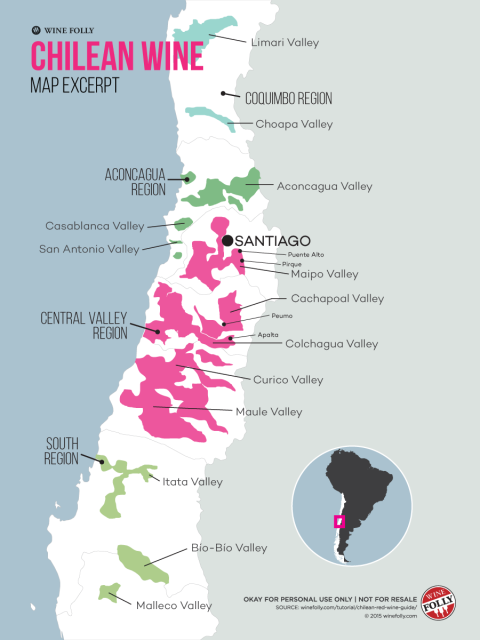Chile has emerged over the last decade or so as a dependable source of relatively inexpensive — and good value — red wine. Here is Wine Folly‘s brief overview of the distinctive wine regions of Chile:
It seems unlikely that the thin, long country of Chile is a larger producer of Cabernet Sauvignon than the US, but it’s true!
Chile’s vineyard area dedicated to Cabernet Sauvignon is second only to France. The country has become a winemaking hot spot due to the cooling effect Chile receives from the Pacific Ocean and the Humboldt Current. In other words, Chile has an ideal climate for wine. Chilean red wines have gone from good to exceptional in recent years and yet, they still offer good value.
Most of Chile’s vineyards are located in the Central Valley Region, which is a large region that contains several smaller valleys including Maipo, Colchagua and Maule Valley. Most of the Central Valley is wide and flat and this is where the bulk of Chilean wine is made. If you’re looking for age-worthy wine however, the fine wines of Chile tend to be found in the foothills (areas with higher elevations), especially the sub-regions of Puente Alto (in Alto Maipo or “High Maipo”) and Alto Cachapoal (“High Cachapoal”). Chilean Cabernet Sauvignon and Bordeaux blends have a signature tart-and-fruity style, typical of a cool-climate wine. The tartness (aka acidity) comes from cool ocean breezes being pulled inland by the incredibly tall Andes Mountains.




